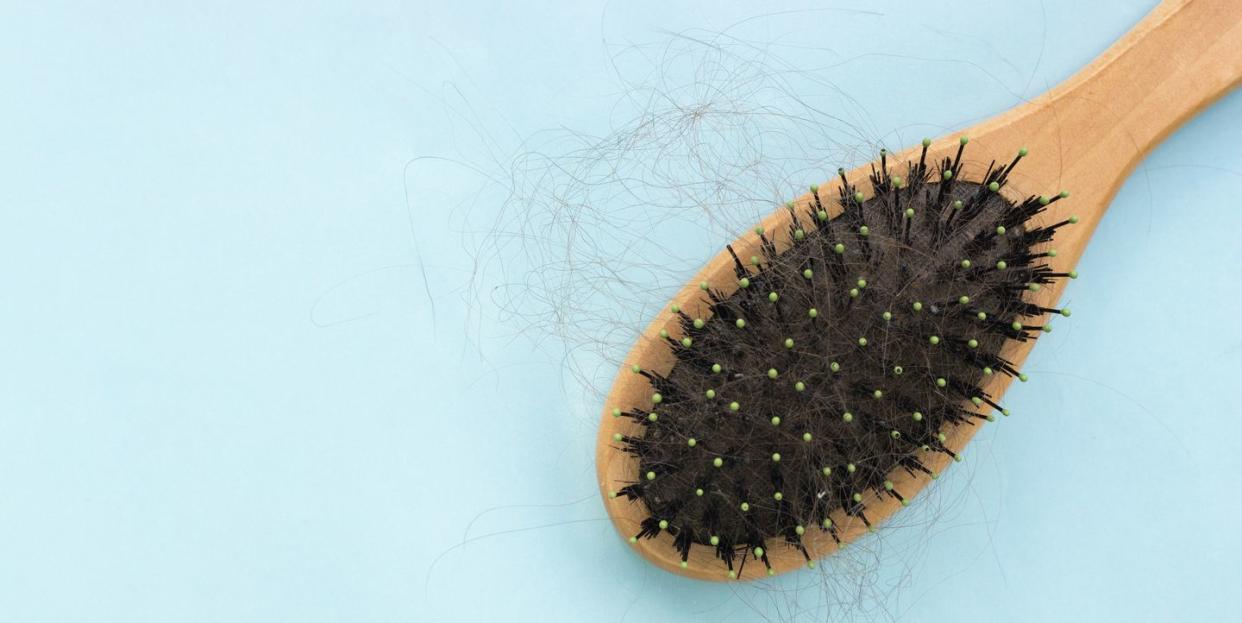Is Traction Alopecia What's Causing Your Hair Loss?

Baby hairs have become a big part of hairstyles over the years. They're typically gelled down to frame the face as the finishing touch to styles like buns, ponytails, box braids, and cornrows. Popular as they are, what a lot of people don't know is that baby hairs are actually broken hairs around your hairline, and just a smaller example of the effect that traction alopecia can have on the hair.
Meet Our Experts: Shab Caspara, New York-based trichologist and founder of Leona, Andy Goren, MD, dermatologist and chief medical officer at Daniel Alain, Debra Jaliman, MD, New York-based dermatologist.
In 2018, 30 million women were estimated to be affected by some form of alopecia in the U.S., per the American Academy of Dermatology Association. Additionally, 40 percent of women have visible hair loss by the age of 50, according to the Journal Of The American Academy of Dermatology. Aside from hair loss that occurs due to excessive styling, the culprits can also be illness, nutritional deficiency, stress, and medication side effects, says Shab Caspara, a New York-based trichologist and founder of the multi-brand hair care platform Leona.
So what actually causes traction alopecia, and how can it be avoided? Read on for everything you need to know.
What is traction alopecia?
Traction alopecia is hair loss caused by continuous styling that strains the hair follicle. These styles can include anything from tight braids to buns, ponytails, and hair extensions. It can also be caused by excessive brushing.
"Hairstyles tend to be cultural, and certain ones are more likely to increase the risk of developing traction alopecia," says Andy Goren, MD, a dermatologist and chief medical officer at Daniel Alain.
What are the early signs of traction alopecia?
There are a few ways to catch traction alopecia before you start losing hair.
According to New York-based dermatologist, Debra Jaliman, MD, the first is noticeable breakage along the edges of the hairline. "You may experience hair breakage or soreness at the scalp and follicle opening, but over time the follicle weakens and grows in weaker and more fragile hair before it seizes growth altogether," adds Caspara.
How can traction alopecia be avoided?
The best way to avoid traction alopecia is to opt for hairstyles that don't pull as much on your hair, says Dr. Goren. If you have to wear tight styles (maybe for convenience or ease of styling), try not to do so for long periods.
If you mostly wear your hair back in a ponytail or bun, Caspara recommends alternating between high and low styles to give your roots a break. For styles like braids cornrows and box braids, give your hair a break as often as you can to ease any tension on your roots.
If you're already experiencing hair loss from styling, you'll have to look into making further adjustments. "The only way to stop the long-term and permanent hair loss resulting from traction alopecia is to adopt a hair regimen that will nourish and strengthen your hair from the inside and out with the use of topicals and supplements," she says.
Of course, if you're not sure which products to try, or you're unsure if what you're experiencing is actually traction alopecia, your best bet is to set up an appointment with your dermatologist.
You Might Also Like

